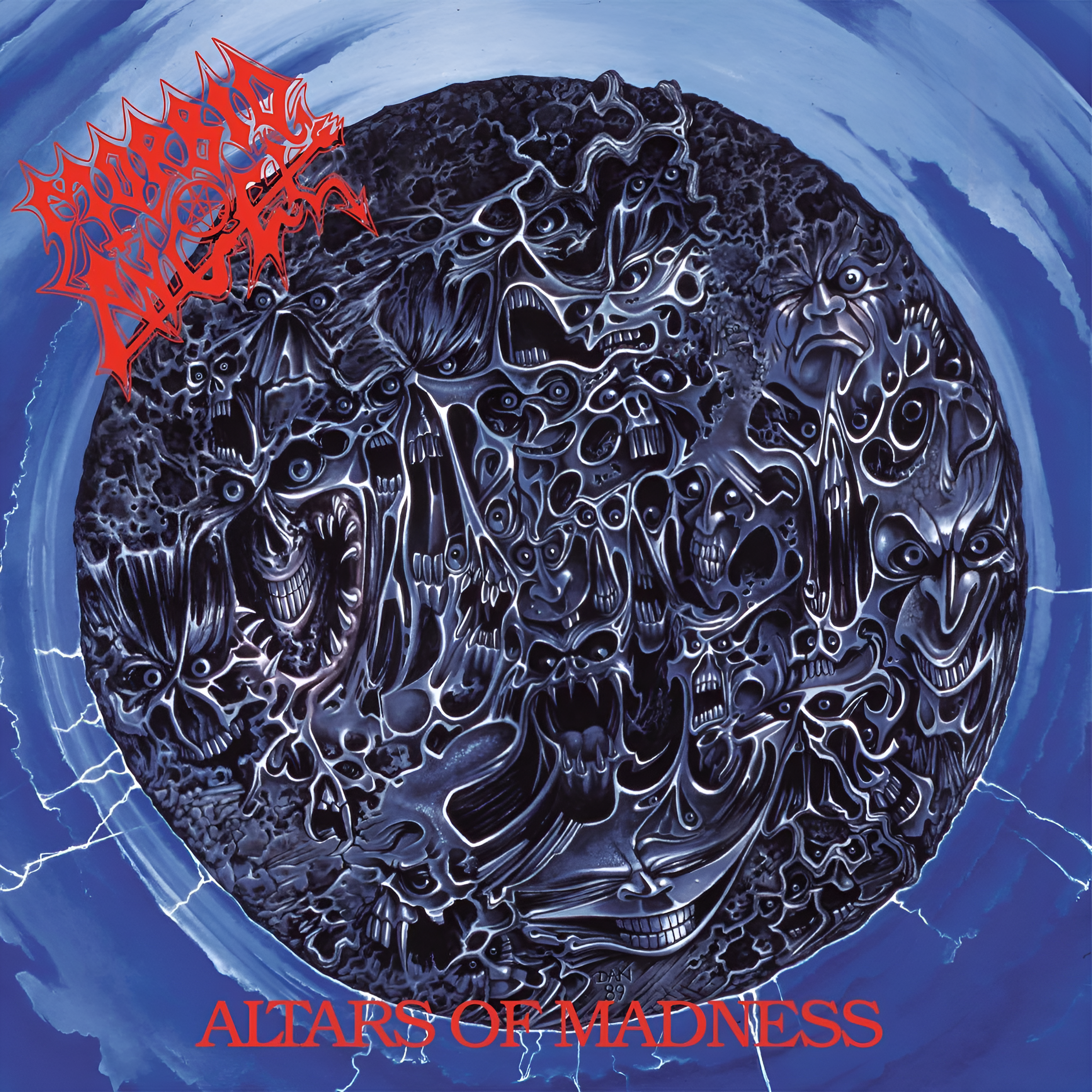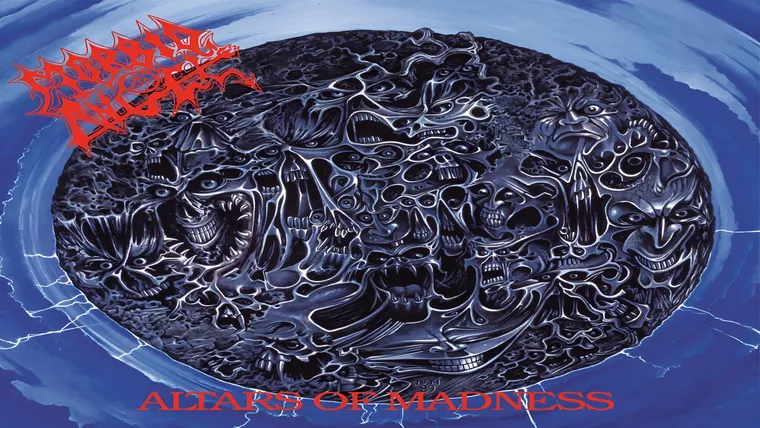
By the time Altars of Madness dropped in 1989, metal was at a crossroads. Thrash had peaked, and more extreme voices were bubbling just below the surface—raw, untamed, and searching for form. But while other bands were still stitching together pieces of speed, punk, and horror, Morbid Angel arrived fully formed. Altars wasn’t just another death metal record—it was the first one to feel monolithic. While others were still conjuring chaos, Morbid Angel summoned structure, vision, and blasphemous grandeur. This wasn’t just an assault—it was a ceremony.
Long before the genre splintered into hyper-technical madness or cavernous murk, Altars of Madness carved the blueprint. It brought together unmatched intensity, occult flair, and a guitar style that felt alien even by today’s standards. Speed wasn’t the goal—it was the language. The real power came from how Morbid Angel bent that speed into strange, otherworldly forms.
Riffs as Revelation: The Sonic Blueprint
The album opens with “Immortal Rites,” and it feels like stepping into a temple mid-ritual. It’s fast, but there’s an eerie sense of purpose. Trey Azagthoth’s guitar riffs don’t just move—they spiral, lurch, and disintegrate. His leads feel less like solos and more like transmissions from a collapsing dimension. At his side, Richard Brunelle provides razor-sharp rhythm support, adding another layer of malicious harmony. These aren’t just songs—they’re spells.
Pete Sandoval’s drumming is machine-like in its precision, but he never feels robotic. His blast beats on “Maze of Torment” and “Chapel of Ghouls” set a new bar for extremity, but there’s an almost jazzy fluidity beneath the surface. And then there’s David Vincent. On Altars, his vocals are youthful but commanding—less guttural than later records but absolutely drenched in menace. His performance is more war cry than growl: urgent, clear, and unforgettable.
Every track feels architected with intent. “Visions from the Dark Side” and “Bleed for the Devil” play like manic sermons, while “Damnation” and “Blasphemy” deliver riff after riff like slaps from the abyss. The band doesn’t just throw speed at the wall—they control it, shape it, and mold it into something that still sounds dangerous decades later.
Beyond the Veil: Lyrical Occultism and Thematic Force
Lyrically, Altars of Madness is steeped in arcane violence and infernal vision. But unlike the cartoonish gore that would later flood the genre, Morbid Angel’s blasphemy feels like genuine heresy. It’s mythological. Cosmic. Songs like “Chapel of Ghouls” speak of undead reverence, while “Lord of All Fevers and Plague” channels Mesopotamian darkness and arcane dominion. There’s a feverish, esoteric conviction running through these tracks, one that elevates the record beyond simple horror.
This isn't death metal as splatter film—this is death metal as sacred text. Themes of possession, chaos, and transcendent evil run deep. Vincent doesn’t sound like he’s singing about demons—he sounds like he is one.
Ritual in the Room: The Power of Raw Production
Recorded at Morrisound and produced by Digby Pearson and Tom Morris, the album's mix is raw but effective. The guitars have an unmistakable dry crunch, the drums snap with intensity, and Vincent’s vocals sit high in the mix like a preacher behind a pulpit of fire. There’s no studio gloss, but every instrument feels alive—organic, dangerous, and unpredictable.
The guitar tone, in particular, deserves special mention. Azagthoth’s riffs slice rather than slam, and his solos break the laws of musical gravity. Instead of melodic showcases, they sound like channelings of madness. That production doesn’t tame him—it amplifies the chaos.
There’s a cavernous atmosphere that permeates Altars, but it’s not the murky suffocation of later death metal. This is cathedral darkness: echoing, vast, and sacred in its blasphemy.
Etched in Blood: The Enduring Legacy
At the time of release, Altars of Madness wasn’t just another debut—it was a manifesto. For many, it was their first exposure to true death metal. It introduced a new vocabulary: faster, darker, more arcane. In hindsight, it’s not just one of the greatest debut albums in metal—it’s one of the most important albums in the genre’s entire history.
While Morbid Angel would go on to refine their sound—adding classical influences on Blessed Are the Sick, commercial polish on Covenant, and suffocating weight on Domination—Altars remains the raw heart. It’s a snapshot of a band already leagues ahead of their peers, delivering music that still feels dangerous, mystical, and profoundly heavy.
Altars of Madness wasn’t the start of death metal—it was the moment it became inevitable.
Standout Tracks:
Immortal Rites
Chapel of Ghouls
Maze of Torment
Visions from the Dark Side
Lord of All Fevers and Plague
Death metal didn’t begin with fire—it began with madness. And with Altars of Madness, Morbid Angel didn’t just break ground—they tore open the sky.

